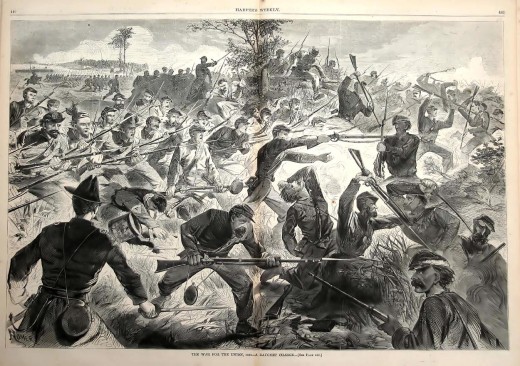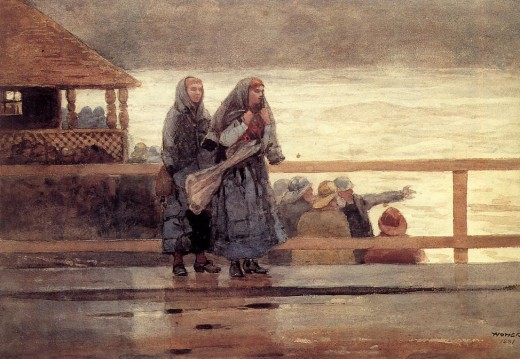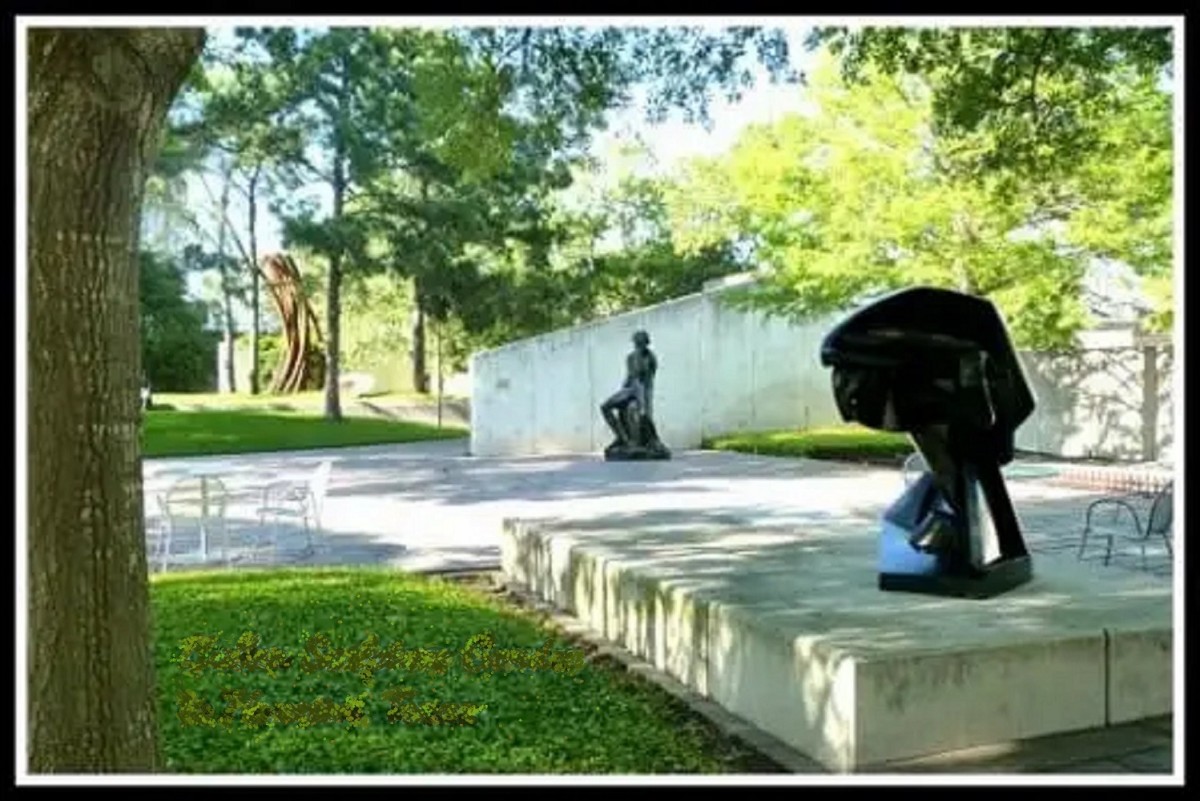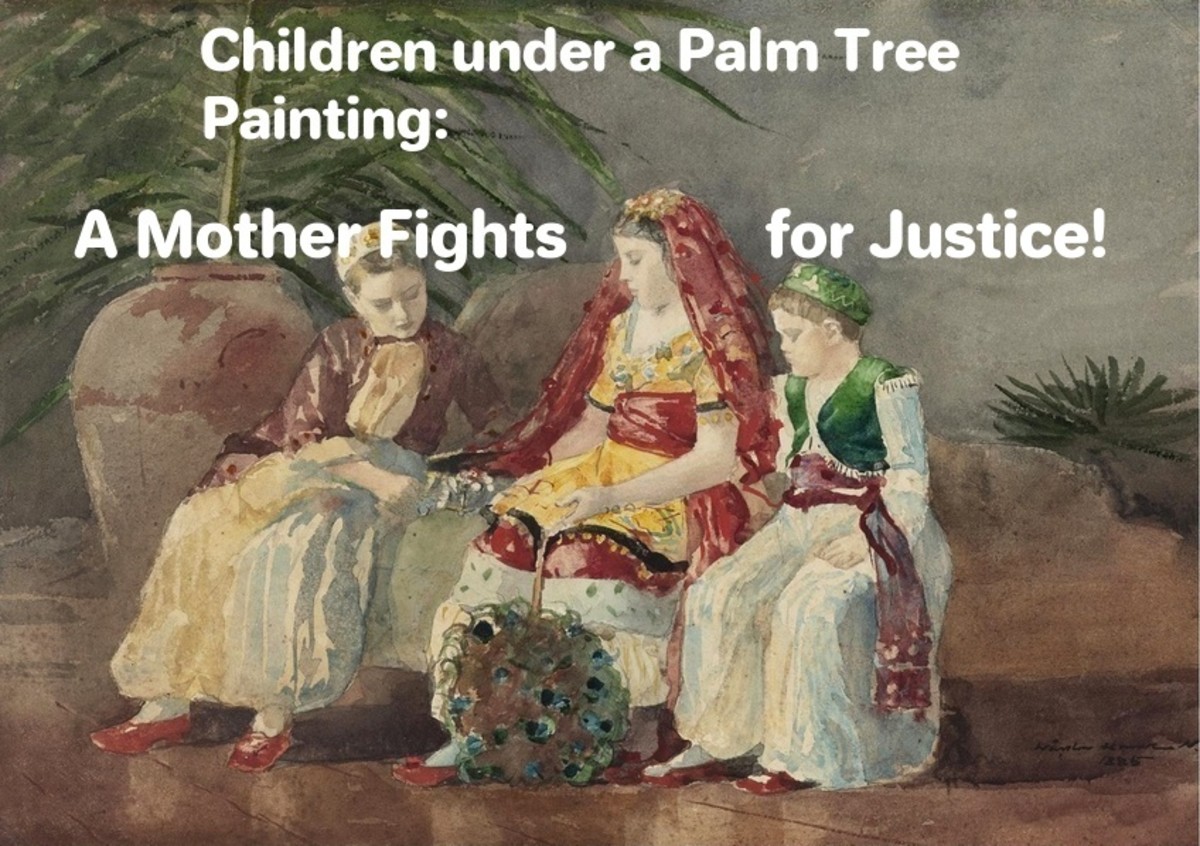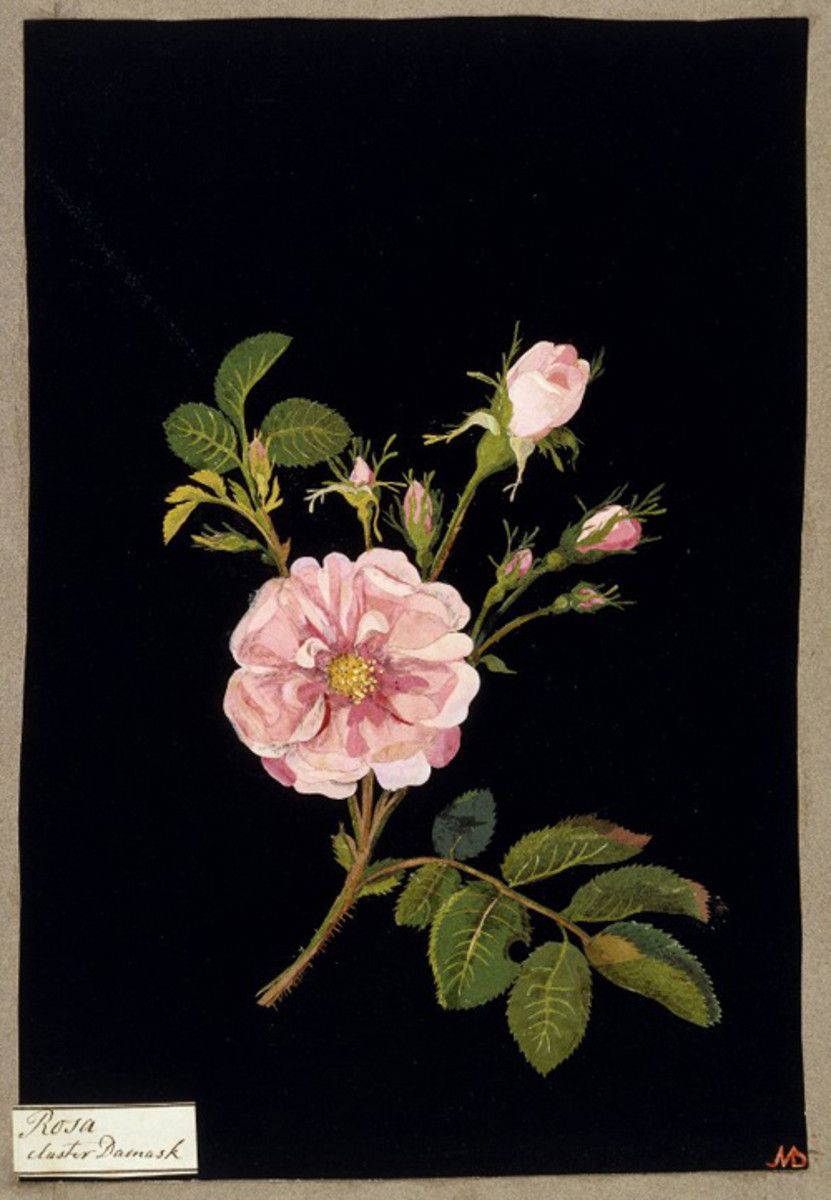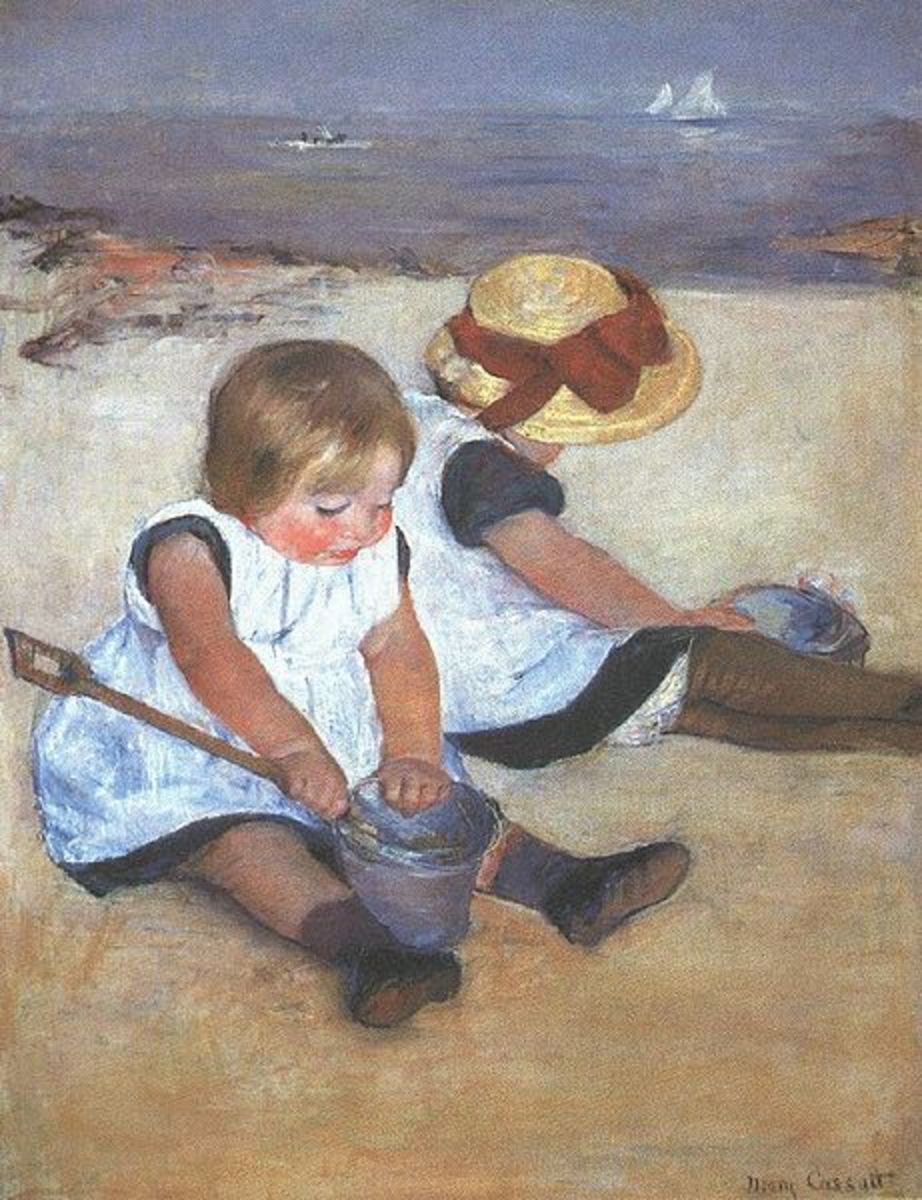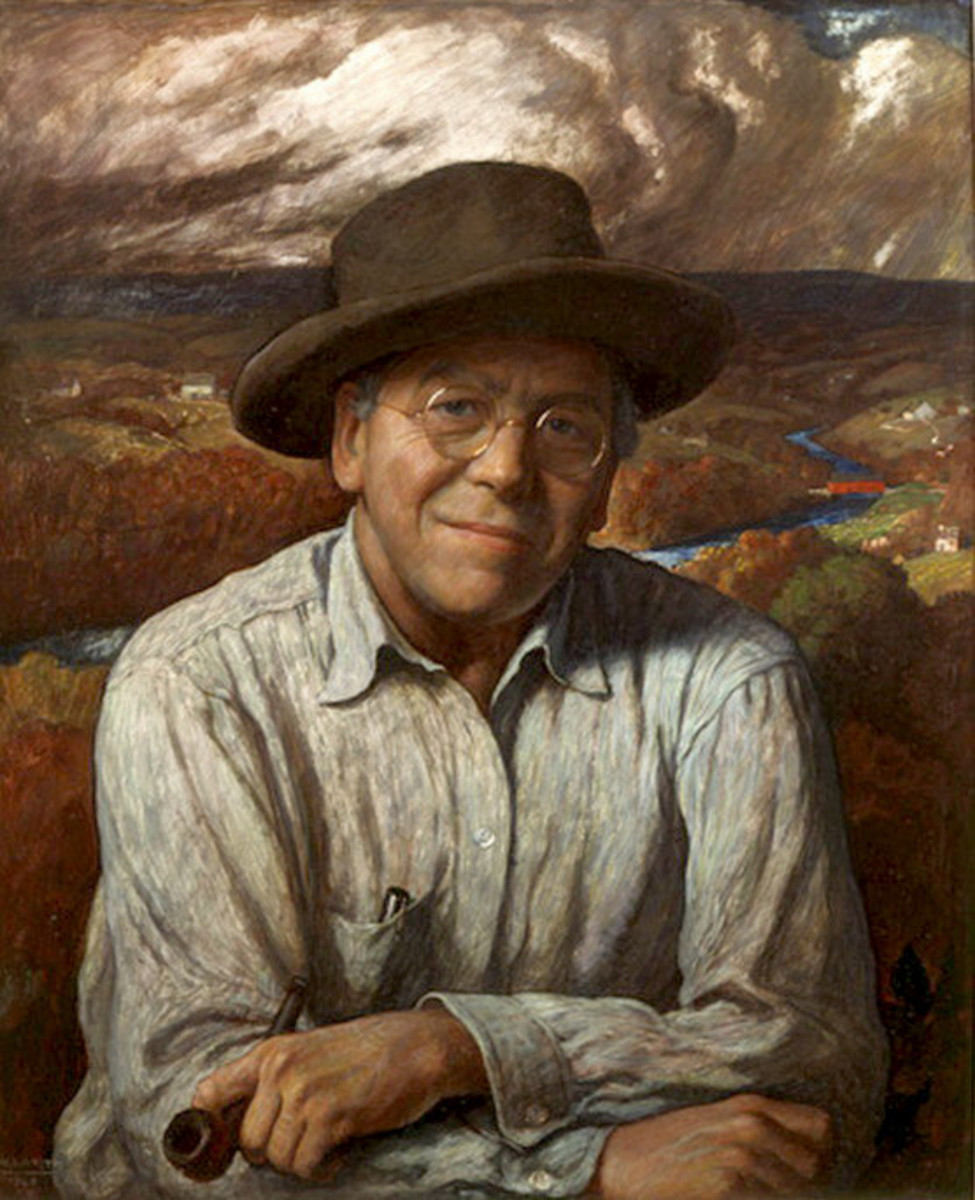An American Artist:Winslow Homer
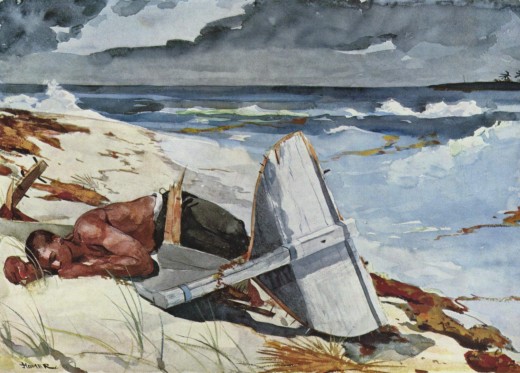
Yankee, self-reliant, strong willed, practical and terse. So goes the liner notes in Homer by Mary A. Judge, a book on Homer and his art. Homer was born in Boston and lived between 1836 and 1910. He was a self-taught artist who began his career as a graphic artist before the American Civil War. He became a correspondent during the war and left some very good pictures of soldiers. He went on to become noted for pictures of Americana and life scenes. His work in his later period made him the foremost painter in the United States.
It was on his second trip to Europe that he went to a remote fishing village on the North Sea. That is where his mature style developed. Hw painted the local fishermen in watercolors. He portrayed them dealing with the sea and nature on a daily basis and represented it as a struggle.
When he went back to America he found a similar and remote place at Prouts Neck on the coast of Maine. He created images with directness and a strong sense of design. He created images that were at once mythical, factual and “formally” simple according to Ms Judge.
The Bathers
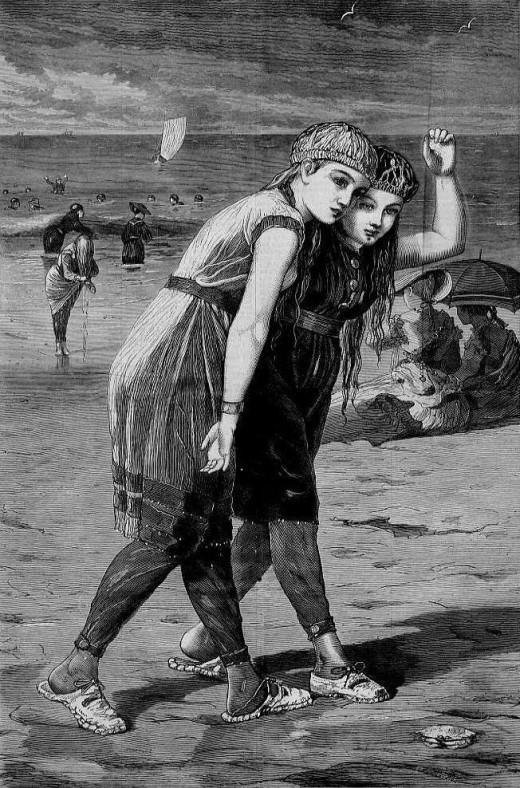
It was just before the Civil War that he started out painting ordinary life. Ms Judge says he did so “with a thickly applied brush that affirmed the materiality of forms and substance.”
Along with his French contemporaries he had an interest in Oriental design principles such as a speck of red-common in Japanese prints. As an illustrator his work showed a strong sense of design, which he retained, in later work. He also displayed a bit of a storytelling element which Ms Judge says became “more mythic” than narrative. His view of nature was more stark than sentimental which was somewhat a break from contemporary attitudes.
In oils he expressed power and simplicity. In watercolors he was more free and had vibrant, unlikely colors “side by side.” It was his favorite medium. Although he was a man or the 19th century, he ignored the material progress and concentrated on rustic life such as hunting, fishing and outdoor work.
His early work showed Victorian manners, propriety and strain between the sexes. His mature work was modern verging on abstraction with an element of mystery.
I was introduced to his work in a college Art History class and found something I liked even though I only had a vague understanding of the technicalities of art. His “Snap-the-Whip” shows schoolboys playing the game in which we used to call crack the whip. It has a sense of dynamic
power in it as well as portraying life. It was a wood engraving for Harper’s Weekly.
I was not too aware of his Civil War work until I looked through Ms Judge’s book, but I like his portrayal of soldiers. To me it has a sense of realism although more expert people could disagree with me.
Many of his pictures portray men and women at beaches, playing games, skating and dancing which I cannot identify with but show something of an upper class Victorian lifestyle.
It is his pictures of fisherman and nature, which are the most dynamic and draw the viewer in. The legacy of this artist seems to fit much of what he seemed to be, that is, a New England Yankee who was strong willed, self reliant and a very American artist.
Source: Homer by Mary A. Judge 1986 IBSN 0517-55725-8, Crown Publishers, Inc.
War and other perils
